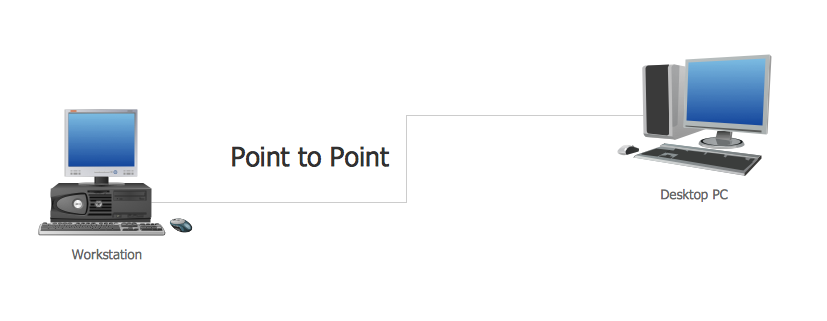Point to Point topology
is the simplest topology that connects two nodes directly together with a common link. The entire bandwidth of the common link is reserved for transmission between those two nodes. The point-to-point connections use an actual length of wire or cable to connect the two ends, but other options, such as satellite links, or microwaves are also possible.
When you change TV channels by remote, you are establishing a point-to-point connection between the remote control and the TV’s control system.
The transfer of data in a point-to-point topology can be in multiple ways across the network: in a simplex, in full duplex, or half duplex.
- In Simplex mode of communication, signal flows in ONE direction and only one node transmit and the other receives.
- In Half duplex mode of communication, each node can transmit and receive but NOT at the same time.
- In Full-duplex mode of communication, both stations transmit and receive simultaneously.
 |
| https://www.conceptdraw.com/How-To-Guide/picture/point-to-point-network-topology.png |
Advantages of Point to Point Topology:
- Highest Bandwidth because there is only two nodes having entire bandwidth of a link
- Very fast compared to other network topologies because it can access only two nodes.
- Very simple connectivity
- It provides low Latency
- Easy to handle and maintain
- Node Can be Replaced in few seconds
Disadvantages of Point to Point Topology:
- This topology is only used for small areas where nodes are closely located.
- The entire network depends on the common channel in case of link broken entire network will become dead.
- There is another major drawback of this topology there are only two nodes if any of the node stops working, data cannot be transfer across the network.
Application:
retrieve from :https://computernetworktopology.com/point-to-point-topology/One common example of this point-to-point topology is that a PC connected to a printer.
No comments:
Post a Comment